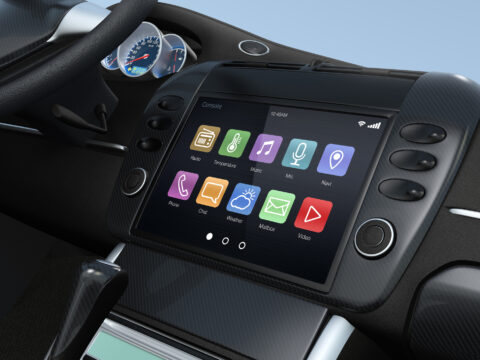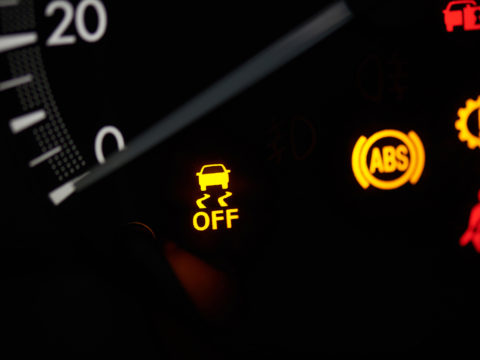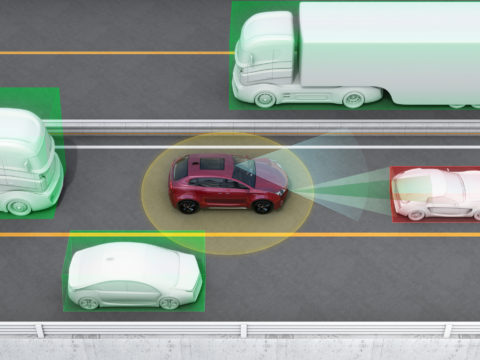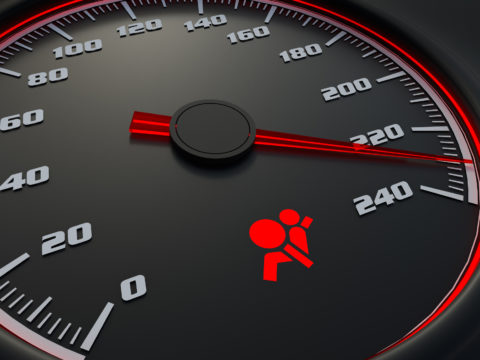Being knowledgeable in your vehicle’s features and warning lights is a terrific way to be proactive at keeping your car in top running condition. One warning you may encounter at some time is the VSC light. When you prepare for possible situations, you will not be caught by surprise.
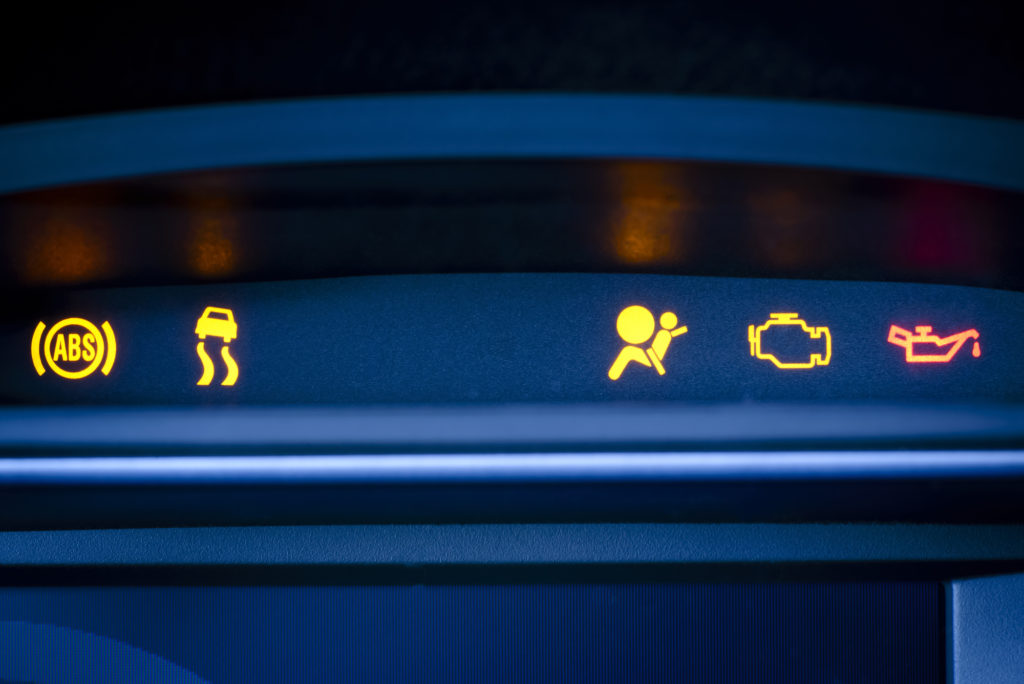
Contents
VSC Light Meaning
The dashboard lights on a vehicle will help alert you to any concerns or issues going on behind the scenes. However, having the VSC light on can be a little concerning if you are unsure what it means or what is happening to your car.
When this light is active on the dash, it communicates that the feature’s VSC, or vehicle stability control, is deactivated.
How Does the VSC System Work?
VSC, also connected to the traction control elements, aids in maintaining active traction and control to the tires, even in unfavorable road conditions. This feature may decrease or increase brake pressure to one, two, or three of the four wheels of a vehicle.
In some vehicle models, the VSC system will reduce engine speed while directing brake pressure on the individual tires that require more traction. This process can aid in increasing traction and stability on slippery roads.
Where Is the VSC Button Located?
Your vehicle’s VSC button can be in various locations, depending on your car’s year, make, and model. Typically, it will sit on or near the gear shifter, or an alternative spot is close to or on the steering wheel.
This feature should be within easy access for the driver, so if you do not see it right away, it may be on the side of the steering column or gear shifter. It sometimes contains a picture of a vehicle with swerving lines behind it like it is skidding out of control.
What Causes VSC Light To Come On?
Having a dash light come on may cause some anxiety, especially if you are unsure why or what to do about it. There are several reasons why a VSC light may suddenly activate on your vehicle.
Sometimes, a driver may accidentally disable the vehicle stability control while entering the car and pushing the button without realizing it. This situation is easy to fix, but often, other elements can cause this light to come on.
Some common elements that may cause the VSC light to come on include:
- ABS problems
- Mass air flow sensor faults
- Throttle body issues
- Faulty accelerator pedal or sensor
- Check engine light is on
ABS Problems
The vehicle stability control feature will not work properly if you have problems with your ABS since these two elements work together during operation.
For example, if your ABS does not work because the sensor is faulty, your vehicle will not have access to VSC either and illuminate this light as a warning. Another situation could be low on brake fluid, causing the ABS to throw you a warning.
Mass Air Flow Sensor Faults
Sometimes sensors can cause many dash lights to illuminate, including the VSC light. One primary contributing sensor is the mass air flow sensor (MAF) that directly affects this dash light. Thankfully, sensors can be relatively easy and inexpensive to remedy when compared to major vehicle repairs.
Throttle Body Issues
The throttle body is a complex electronic system that can have issues with sensors and activate the check engine light. In turn, the VSC may also illuminate as a result.
The throttle body mixes air and fuel for optimal engine performance. If there are problems that cause the engine to run sluggish, stall, or misfire, warning lights such as the vehicle stability control may come on.
Faulty Accelerator Pedal or Sensor
You may not realize there can be problems with the accelerator pedal until now. Alternatively, a sensor also helps read its pressure and transfers information to the vehicle’s engine.
If there are any issues with this pedal or its corresponding sensor, the check engine light may come on, you may experience lagging in acceleration, or the VSC light may be active.
Check Engine Light Is On
In this situation, having the VSC light on while the check engine light is on does not mean that there is a problem with both your engine and the vehicle’s stability control. Instead, your car may disable the VSC until you have the other problem fixed, depending on why the check engine light is active.
What to Do When the VSC Light Comes On?
If you notice that your VSC light is on while driving, you should check into it, as it may be the warning to a more severe problem.
If you are driving, be sure to pull over and stop the vehicle before attempting to focus on your dash lights. Next, locate the VSC button on your shifter or steering column. Then, try to turn it on and off again. This procedure may solve the problem if you accidentally turn it off when you get into the car.
If it does not turn off, or there are other lights active as well, you can try resetting it, or you may have to pay a visit to your local mechanic shop for more diagnostics.
How to Reset the VSC Light
Before heading to your licensed mechanic shop, try resetting the VSC light to see if that solves your problem. This procedure can be done in two ways and is easy to do in only a few short minutes. It could save you a trip to your local shop and save you money for an unnecessary diagnostic visit.
You can try one or both of these methods to see if it clears up the VSC light on your car.
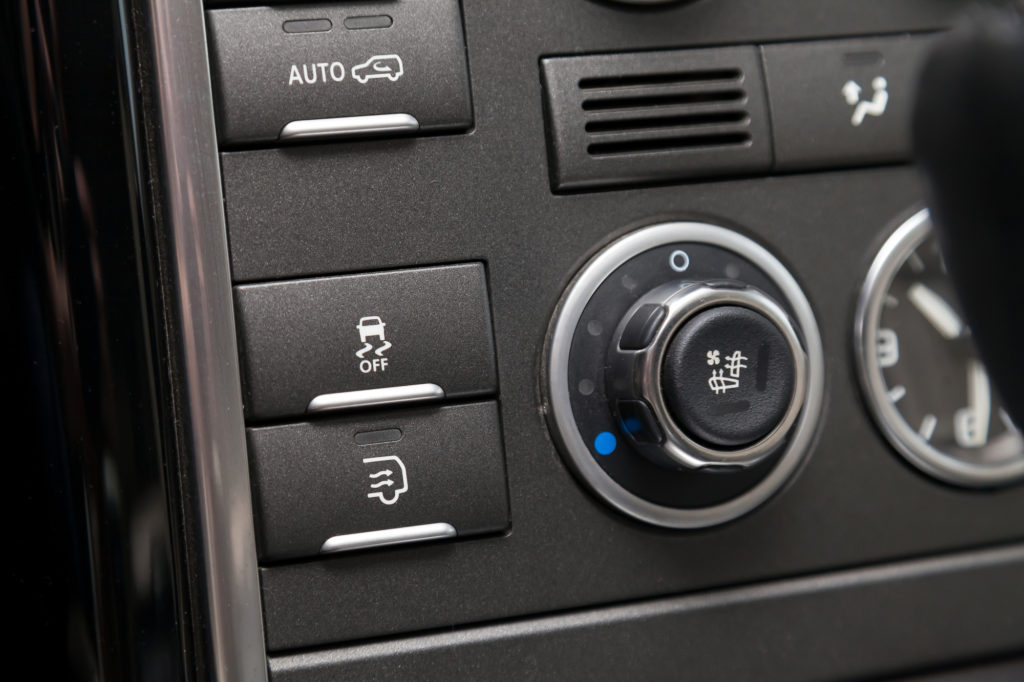
Option 1:
Step 1
With your vehicle turned on and running, put it in park. You should not attempt to reset the VSC light or handle tasks like this while driving.
Step 2
Find the VSC button in your vehicle. Depending on your year, make, and model, it may be on the side of your shifter or the steering column, although some cars may have it close to the shifter on a dash panel.
Step 3
Next, you will need to press and hold the VSC button for longer than three seconds. This action will start the reset process.
Step 4
After letting go of the button, both the VSC and the TRAC lights should be active. These indicators show that both the vehicle stability control and the traction control are off.
Step 5
Finally, press the VSC button once more for only a second to turn it back on. After that, the TRAC and VSC lights should go out and become engaged once again. Your vehicle should operate as normal now.
Option 2:
Step 1
Ensure the vehicle is not turned on or running and open the hood. Engage the parking brake for additional security, especially if you are parking on an incline.
Step 2
Locate the negative battery cable on the car battery. It should have a negative (-) symbol, which should be black. You may have to lift off the battery cover if your vehicle includes one for your battery.
Step 3
Use the correct socket size to safely disconnect the negative cable from the battery in the vehicle and leave it disconnected for a minimum of 15 seconds.
Step 4
Then, reconnect the negative battery cable and re-tighten it. Replace the battery cover if necessary. Close the hood.
Step 5
You can now turn on the vehicle, and the light should be off. This battery disconnect should have reset the VSC light for you.
If these resetting processes do not clear out the light, the issue may be coming from an entirely different problem. In this situation, you should consult a licensed mechanic. There could be more going on behind the scenes than you know.
Is It Safe To Drive With the VSC Light On?
If the VSC light is still on even after trying to reset it, you may wonder if your car is still safe to drive. Ideally, anytime a warning light comes on that you cannot remedy, the vehicle should go to a licensed technician for more diagnostics.
Even so, your vehicle may still be operable and completely safe to drive, depending on the reason for the light. For example, if sensors are faulty, causing the light to illuminate, you are fine to drive your car, but with some considerations.
Take care in extreme weather conditions where your vehicle relies on vehicle stability control to help keep you from sliding or losing control. Sleet, snow, and heavy rains can prove to be challenging for drivers who are accustomed to using the VSC in these situations.
Although, if you are unsure why the VSC light is on, and you have other symptoms, such as a check engine light or your vehicle is running rough, it is advisable not to drive extensively. These other symptoms can indicate a more severe underlying issue, and the longer you go without seeing a mechanic, the more damage your vehicle may sustain.

